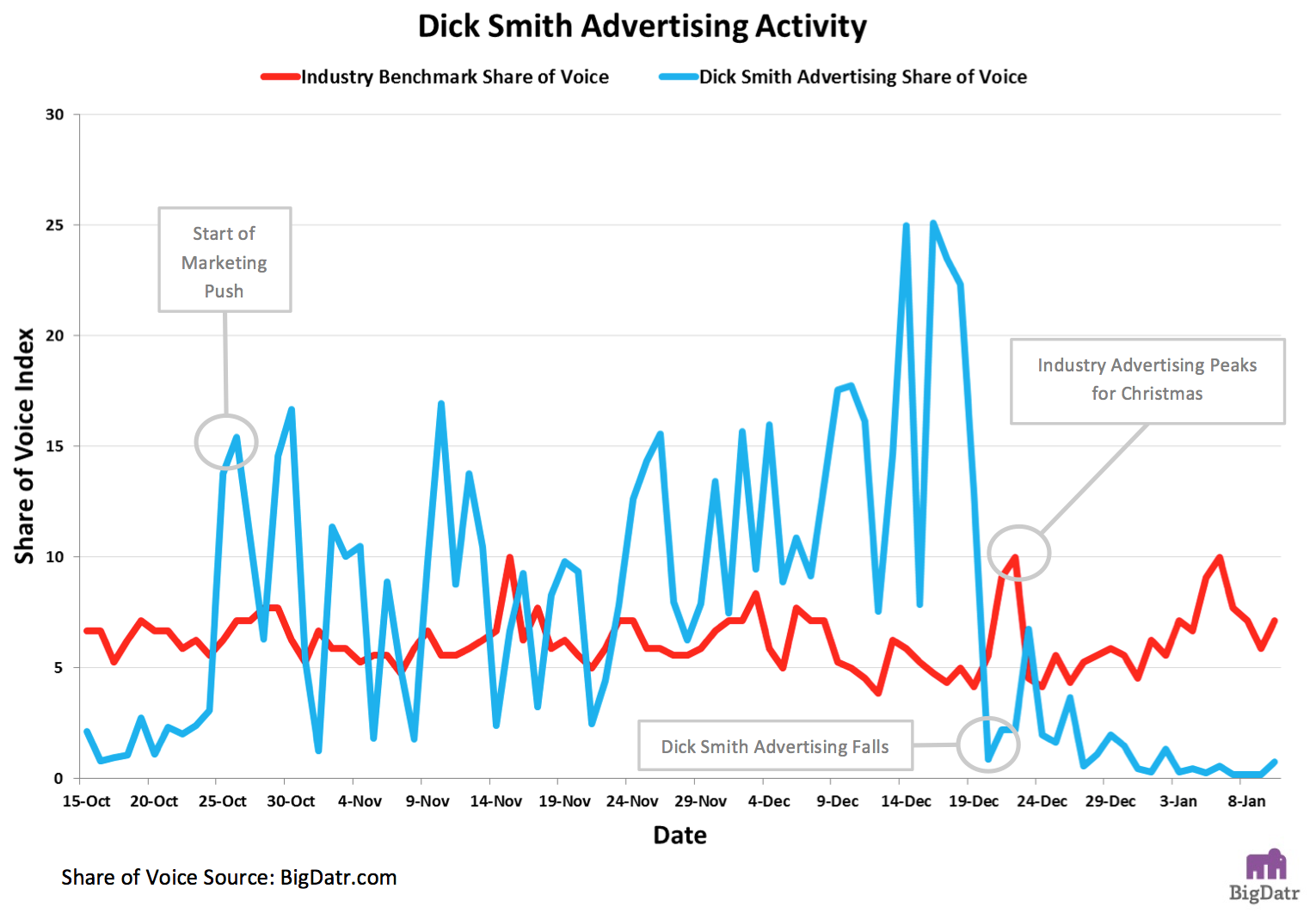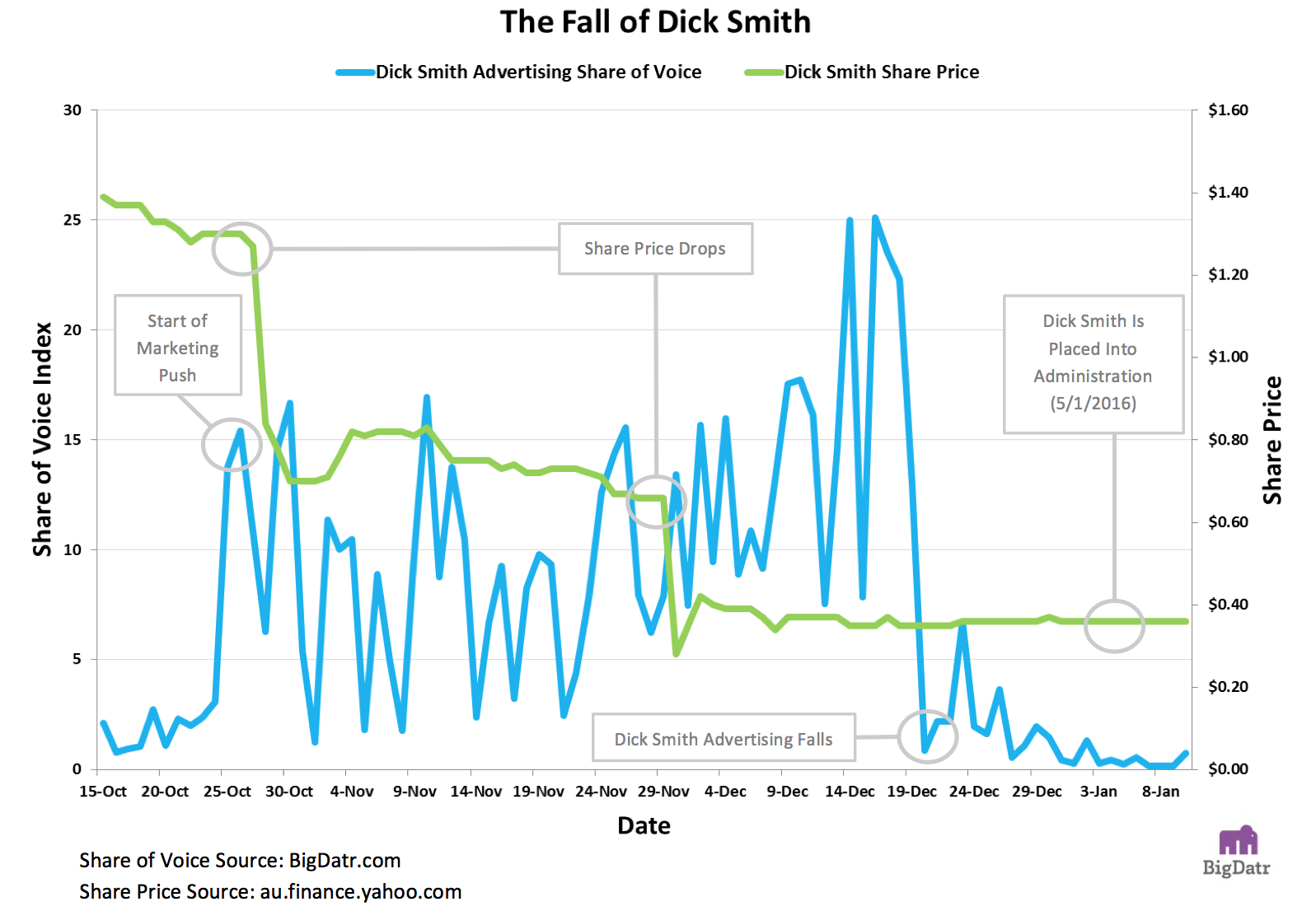Dick Smith... Was It Over Before It Was Over?


The decline of the company hit concerning levels at the end of October with share prices plummeting from $1.27 to $0.84 on the 28th of October. Only days beforehand Dick Smith began the ‘Dick Live Monday Deal’ campaign, which marked the beginning of a two month long aggressive marketing push by the company to move stock. The share price then became relatively stable, but this was short lived with the price taking another huge fall on the 30th of November. Crashing from $0.66 to $0.28, the electronics retailer was in dire straits. In response to the fall in share prices, Dick Smith launched the ‘Mammoth Warehouse Clearance’ campaign which kept advertising share of voice above the industry benchmark until late December.

On December 20th both the ‘Dick Live Monday Deal’ and the ‘Mammoth Warehouse Clearance’ campaigns stopped appearing. This sudden halt in advertising meant that the brand’s share of voice collapsed, a stark contrast to the rising industry benchmark for electronics retailer advertising. A small jump in advertising for last minute Christmas shopping and Boxing Day sales was all that remained of retail distributor’s festive advertising. With the New Year came a halt in trading on the 4th of January and a filing for bankruptcy the day after. While this marks an end of an era for Dick Smith it must be asked when the company really pulled the plug on the electronics “Powerhouse”.
